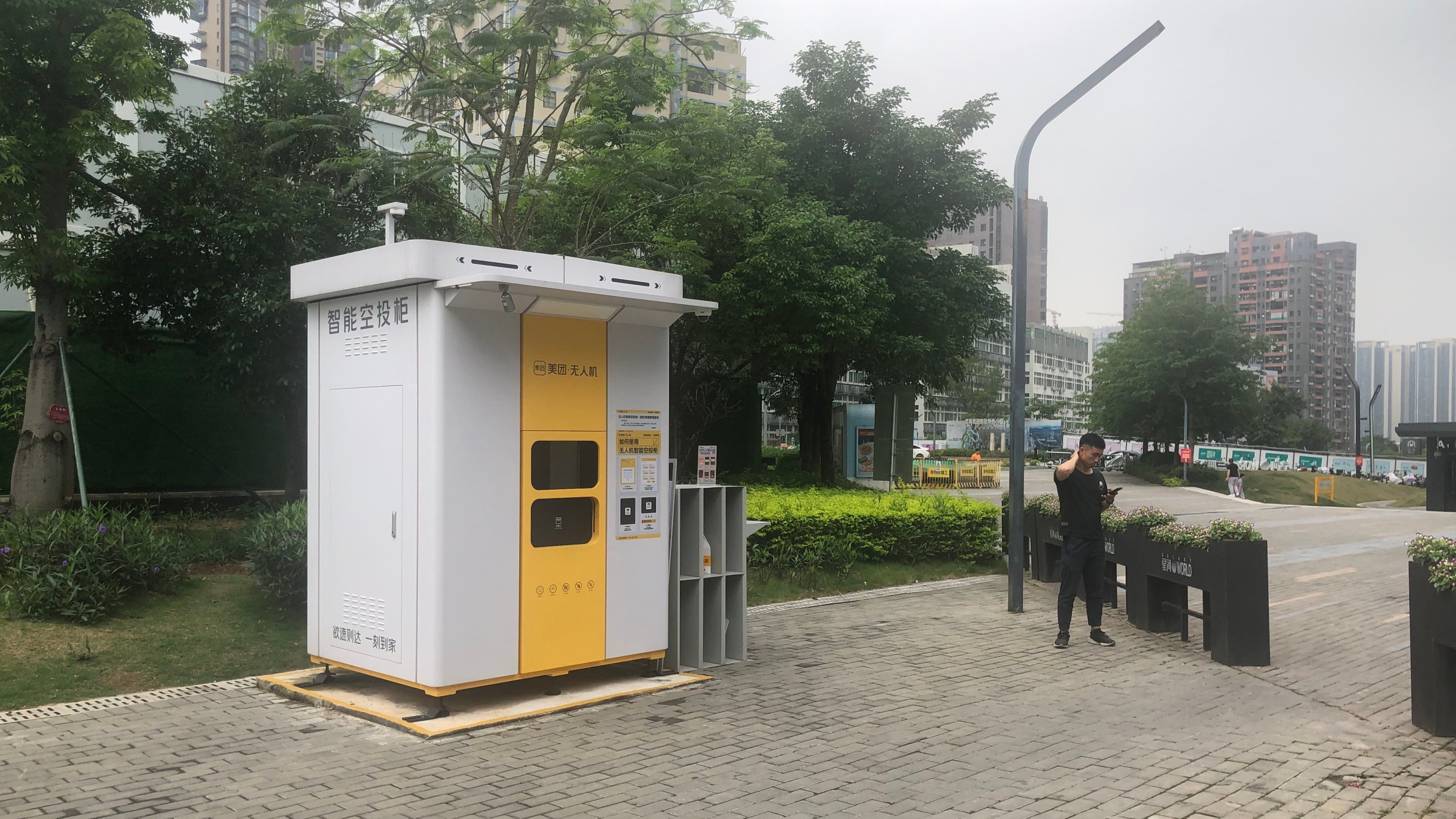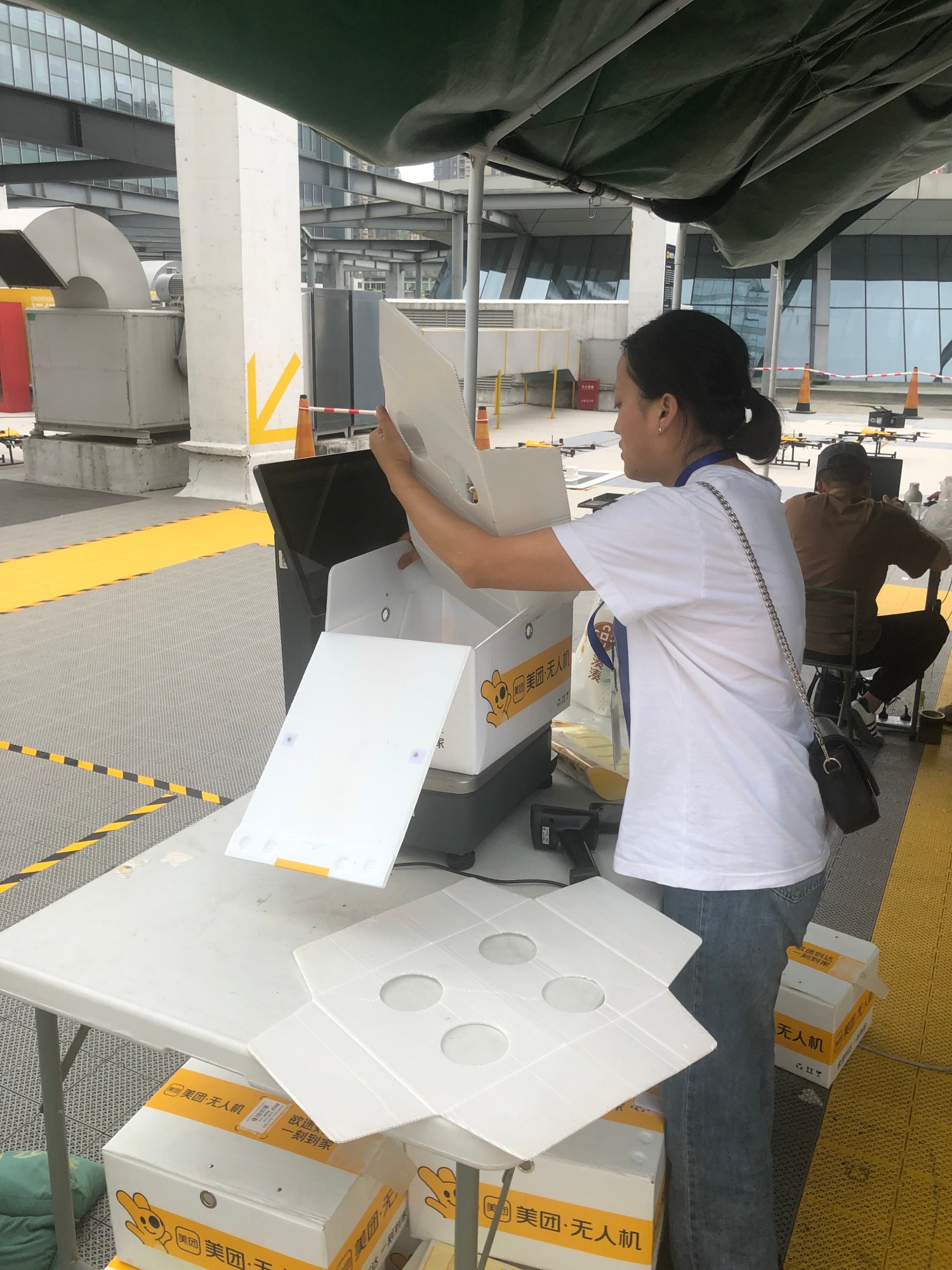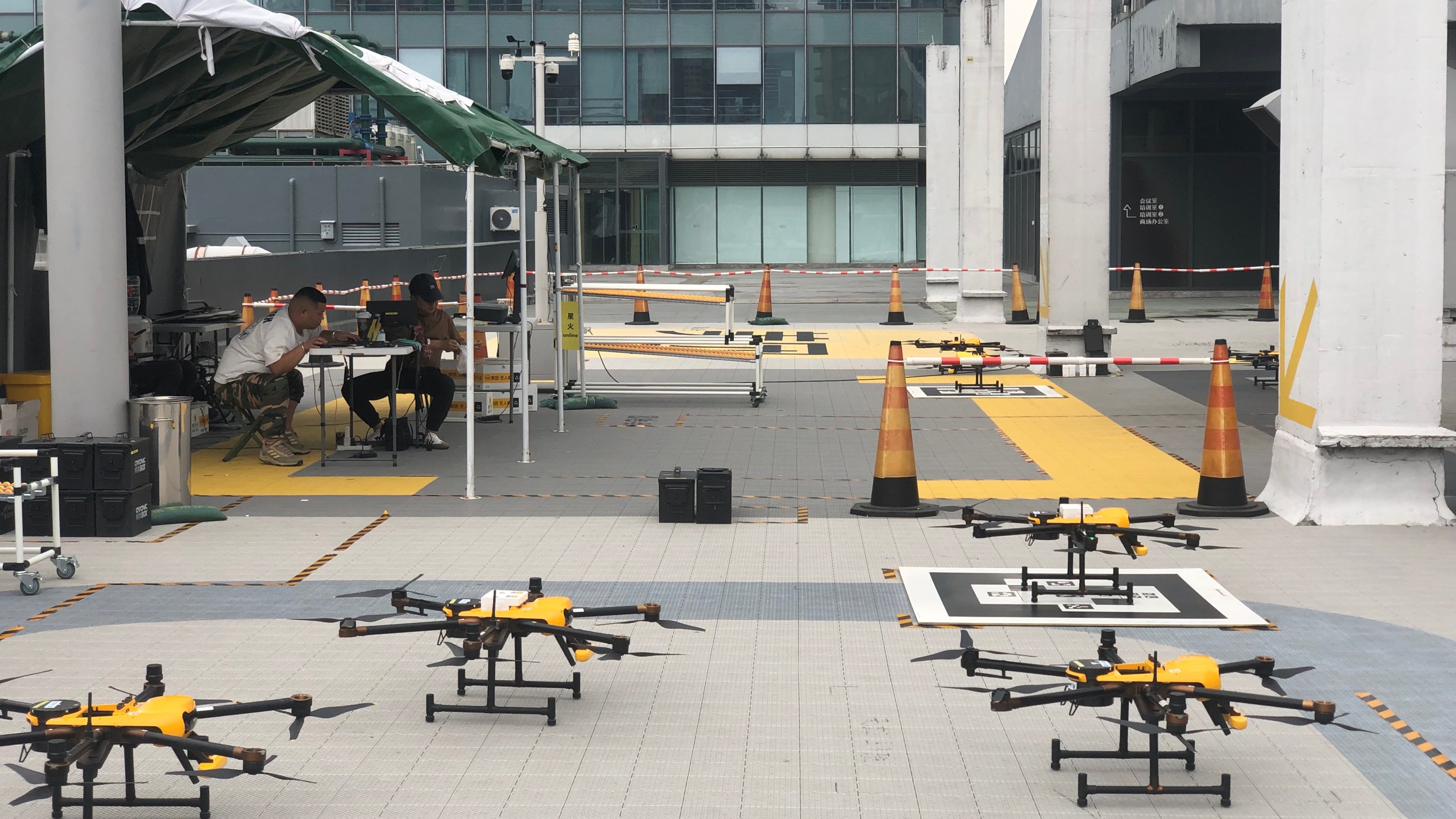China Report is MIT Technology Review’s newsletter about technology developments in China. Sign up to receive it in your inbox every Tuesday.
Last week, I told you about my adventure at Tencent’s customer service center. But the quest to get my QQ account back wasn’t the only reason I went to Shenzhen. While I was in China, I learned that the dominant Chinese food delivery platform, Meituan, has been flying delivery drones in the city for more than a year now, and I wanted to check it out myself.
I found that the reality of drone delivery is still far from ideal, and people may be turned away by the steep learning curve. But at the same time, it was an exciting experience—the prospect of routine drone delivery feels more realistic than it’s ever been.
Meituan currently operates more than a hundred drones from five delivery hubs (or launchpads) in the city. Together, they completed over 100,000 orders in 2022. While the platform itself can deliver basically anything, from dinner to medicine to fresh flowers to electronic devices, the drones are mostly used for food and drinks.
Why? Because Chinese people care about the temperature of their meals, Mao Yinian, head of Meituan’s drone delivery department, tells me. “People care about it greatly—whether they can receive a hot meal or a cup of iced bubble tea in time. But when it comes to other [types of products], people don’t mind if it arrives 30 minutes faster or slower,” he says. Since Meituan’s drone flight routes are all automated—and the drones never run into traffic—it’s easier to precisely control the time it takes for the meal to be delivered. The drones usually arrive within seconds of the estimated time.
To have a cup of bubble tea delivered exactly when you want it? As a bubble tea enthusiast, all I can say is sign me up. But when I tried it out, I found out it’s not as simple as it sounds.
The first obstacle: the drones don’t deliver to your doorstep. Instead, they deliver to one of a dozen pickup locations scattered around the city—vending-machine-size kiosks that function as both a landing pad for the drone and storage for your package if you’re late to pick it up.

Here began my first attempt. After looking up all Meituan pickup locations on the map, I chose one near the subway station I was at. I ordered an iced coconut tea latte, which was specifically marked in the app as being deliverable by a drone. I paid and began waiting in excitement.
Nope. I immediately got a text telling me that “because of a system upgrade,” my order would be delivered by a human courier instead. Was it because of the bad weather? There had been a rainstorm in Shenzhen that morning, and the sky was still covered with dark clouds. But when I checked with a representative at Meituan, she said the drones were working.
It turns out, she told me, I had ordered from a restaurant in a different district, and there were no drone routes that flew from there to the kiosk I wanted to send my order to. There’s no way to know that from the app, she said.
That evening, I tried it a second time. As directed, this time I chose a pickup kiosk in the same district as the restaurant. In fact, they were only a few hundred feet apart. That would surely work, right?
I ordered an avocado strawberry yogurt smoothie and again received a text immediately after the purchase was made. “Drone deliveries are not operational at this time of the day. It will be delivered by a human courier instead,” I was told. I later learned that drones only deliver until 7 p.m. every day. I was 30 minutes too late.
It wasn’t a promising start. But as it happened, I had arranged to visit one of the company’s drone launchpads the next day. So I got the chance to take an inside look at the operation.
The launchpad sits on the rooftop of a five-floor mall. I visited just after the lunch rush, met with some Meituan employees, and saw that humans and robots are equally important in making every delivery possible. I had wondered whether drones were deployed to each restaurant to pick up the food. No—Meituan workers pick up food from the vendors, bring it to the rooftop to package it, and load it onto the drones. Workers also need to change the drones’ batteries.


This launchpad services three nearby pickup kiosks. The rooftop area is divided into three zones, each with its own huge QR codes painted on the floor to mark the exact landing positions for the drones.
Once I learned about the logistics involved, it was clear Meituan had made some compromises in order to make drone delivery work in densely populated areas. Arrangements like making the drones deliver to pickup kiosks instead of straight to your home may be less convenient for customers, but it also reduces the risk that drones will get trapped in difficult locations or injure people. It’s a model for other companies working on drone delivery, and you can read more about what I learned in a story on Meituan’s efforts I published this morning.
When I left the launchpad, I made one last order, from that very site to one of the three kiosks it serves. I felt confident that I’d learned everything I could about the service. Standing by the kiosk, I could even predict what direction the drone would come from, having already watched several of them complete the route from the other end.
Indeed, at exactly the time that the app predicted, the drone came and landed on the kiosk. I typed in my phone number on a screen, and after what sounded like robotic arms moving, a door lifted up, allowing me to retrieve a cardboard box. Inside was my order: an iced orange black tea, sealed in an insulating bag. My drink hadn’t spilled, and it was still cold. And I had finally accomplished my goal of getting a drone delivery in Shenzhen.
Do you think delivery companies should invest in developing drone delivery systems? Let me know your thoughts at zeyi@technologyreview.com.
Catch up with China
1. The Chinese government said it found “relatively serious” cybersecurity risks in products sold by the American memory-chip company Micron. (Bloomberg $)
2. A data visualization of the supply chain for lithium-ion batteries explains why the world still relies on China to make batteries for electric vehicles. (New York Times $)
3. Chinese researchers surpassed their American peers for the first time in contributions to a range of natural-science research journals, according to an academic publication index compiled by Nature. (Nature)
4. Police departments in China have spent millions of dollars developing geographic information systems to improve their surveillance capacity. (China Digital Times)
5. China’s standup comedy industry has been shaken by the possibility of nationwide censorship—all because of a joke by one comedian about the Chinese military. (Reuters $)
6. The business of “expert network” consultancy—paying industry experts for information that might benefit companies and investors—has become a top anti-espionage concern for the Chinese government. (Wall Street Journal $). As a result, executives at the US consultancy firm Mintz are rushing to leave Hong Kong after the company was involved in a police probe. (Reuters $)
7. Meet the astronomer who wrote over 2,000 letters in response to Chinese UFO fans, trying to make sense of their UFO sighting experiences. (Sixth Tone)
8. Montana banned TikTok in the state, and TikTok is now suing it. (Semafor)
Lost in translation

If you frequently see someone on Chinese social media with the alias “Momo” and the avatar of a cartoonish dinosaur in pink, you are not meeting just one individual, but a group of people sharing an online identity to avoid being recognized in real life. According to the Chinese tech publication 36Kr, some young social media users in China are increasingly scared by the doxxing incidents they’ve seen online. To protect their privacy, they are giving up on individualized account settings and adopting a common identity, using the same default avatar generated by one Chinese social platform and pretending to be the same person. The feeling of group anonymity makes them feel more comfortable sharing their opinions online.
But it is not a perfect solution. Some “Momos” are gatekeeping who gets to be one of them—they ask that people using the avatar support the same social causes (and since they can’t enforce it, they openly attack people they don’t like). At the same time, people are finding it difficult to hold these anonymous users accountable when they post extreme opinions. The community that promised to be a safe space has turned out to be full of fights and politics too.
One more thing
What can you do if your billion-dollar tech startup fails? Well, you can always open a coffee shop instead. As Bloomberg recently reported, Dai Wei, the founder of the famed Chinese dockless bike-sharing company Ofo, which once put millions of bikes on the streets in China but has been on the edge of bankruptcy in recent years, is behind a new coffee chain in New York City called About Time Coffee. The café actually shares quite a few similarities with Dai’s last startup—both offer generous discounts to attract potential customers and have drawn generous investment. The café brand has already received more than $10 million from investors.
from MIT Technology Review https://ift.tt/oSWAbz2
via gqrds
Comments
Post a Comment